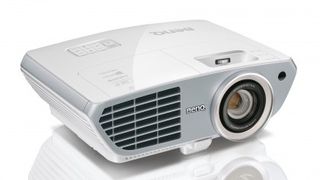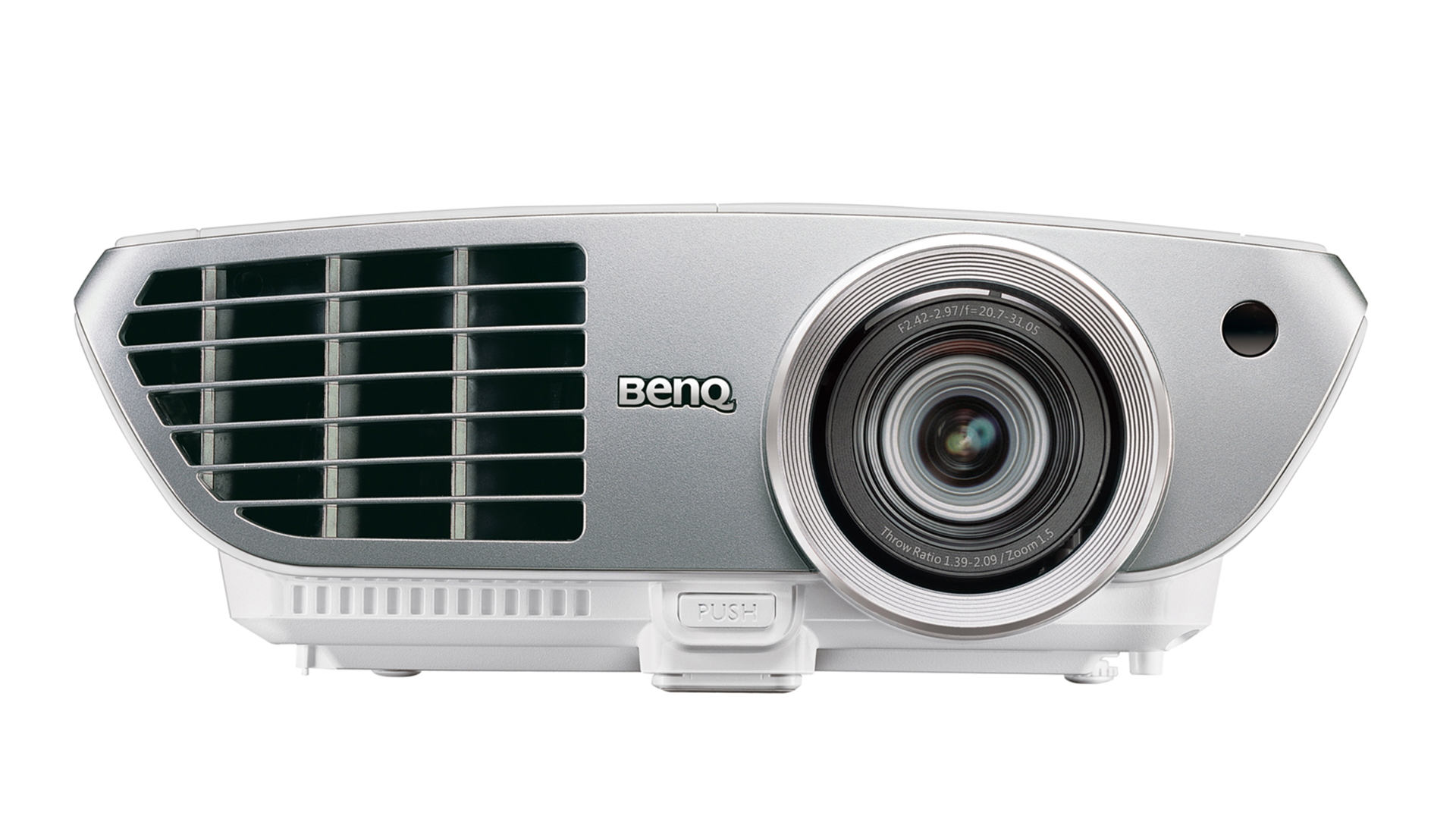Why you can trust TechRadar
This latest BenQ beamer is almost a tough one to pigeon-hole. It delivers a great out-of-the-box cinema experience, with great colours and impressive detail, but it doesn't feel like it's been created with the home-user in mind.
It feels a bit like an office projector that's stepping outside its comfort zone, with an aged-looking user-interface and physical setup options that aren't particularly home-friendly.
And price-wise, at some $1,540 (£974, AUS$1,990) it feels a touch over what you'd be wanting to pay for this level of home beamer.

We liked
While its 2,500 ANSI Lumens lamp allows it to be used in the day, in a blackout the W1350 produces very good images straight out of the box in Cinema mode. The 120x330x247mm, 3.7kg W1350 also sports an excellent design, with the two-tone white and silver chassis tapered on each side to produce a V-shaped product that looks as slight and as svelte as a lamp-meets-air-con unit can do.
However, the W1350 isn't particularly loud; I measured it at 61 decibels. This can be covered-up by turning-up the speaker, of course, and it does go loud enough without distorting to do just that.
Another nice touch – and ideal considering its primary environment is a blackout – is the backlit-remote control. It's even in red to help preserve night vision.
We disliked
While as a multimedia projector for occasional gaming TV and movies the W1350 works well, it's not faultless – and it's not particularly user-friendly either. It's graphical user interface is very average, looking like something you might find on a bargain bin TV about 10 years ago.
If projector manufacturers want to know why their wares are so often judged as functional business machines rather than gadgets to delight us in the home, they should look at these user interfaces.
That's exactly what's happened with built-in speakers; a couple of years ago a speaker in a projector was utterly unheard-of. In 2015 it's very rare to find any 'budget' projector without a speaker, though with competing models like the ViewSonic PJD7830HDL now boasting a stunning 16W speaker, the trends is now overtaking what the BenQ W1350 is capable of.
Although I was impressed by the colour in hi-def footage, I did notice a lot of evidence that the W1350 produces rainbow effect despite its six-speed colour wheel. Most viewers won't even notice this, but those of us with eyes that are sensitive to this side effect of a slow colour wheel, the W1350 is worth avoiding (though so too are almost all DLP projectors under about £1,500).
Another niggle was that the red backlighting on the remote is engaged each time a button is pressed, so the entire thing blinks constantly if you're, say, performing multiple presses to turn-up the volume.
Verdict
Is this really a home cinema beamer? It's tricky to set-up and almost impossible to use off-centre without resorting to the keystone correction tools. That might be fine for business presentation but just doesn't cut it in home cinema.
The BenQ W1350 feels almost like a business projector that's not been changed quite enough.
That said, its video processing is good, producing excellent Full HD detail and almost spot-on colours that lack only contrast and black levels. The result is an excellently cinematic image straight out of the box.
The backlit remote control is a great idea for home cinema, for sure, but overall the W1350 needs a few tweaks to its set-up tools and its on-screen menus to lend it a friendlier face.
There's also something about the W1350's price that screams overkill for most; do you need 3D? It's arguably the high-point of this product in terms of pure image quality – and it's hassle-free to set-up – but it does mean a price about £100 higher than close competitors.
I would happily swap 3D for some extensive lens shift levers, which would give the W1350 the versatility that should be at the heart of its design.
Jamie is a freelance tech, travel and space journalist based in the UK. He’s been writing regularly for Techradar since it was launched in 2008 and also writes regularly for Forbes, The Telegraph, the South China Morning Post, Sky & Telescope and the Sky At Night magazine as well as other Future titles T3, Digital Camera World, All About Space and Space.com. He also edits two of his own websites, TravGear.com and WhenIsTheNextEclipse.com that reflect his obsession with travel gear and solar eclipse travel. He is the author of A Stargazing Program For Beginners (Springer, 2015),

I usually hate cleaning, but the Roborock F25 Ace wet-dry vacuum made it kind of satisfying

Testing Samsung's new AI-powered vacuum taught me that I don't really need my vac to be know the difference between every single surface

I’ve used a lot of power banks, but the Baseus Blade Pro is the only one slim enough for my laptop sleeve








